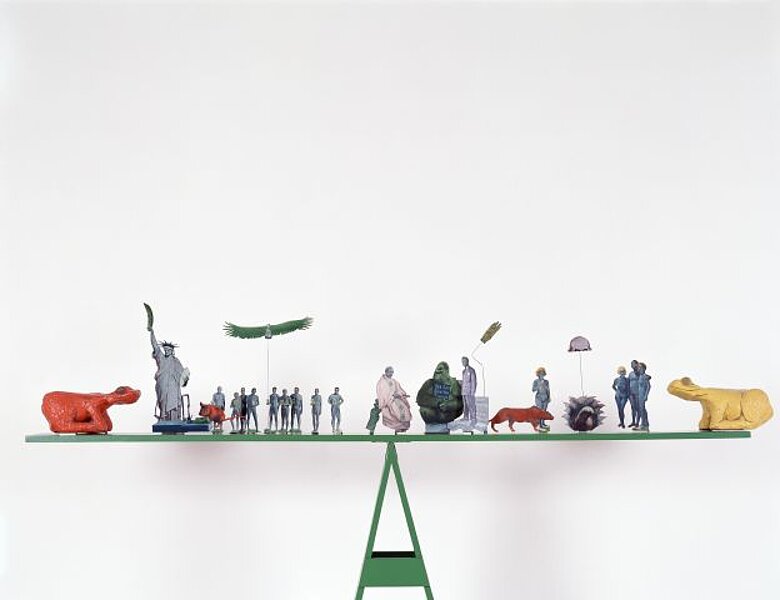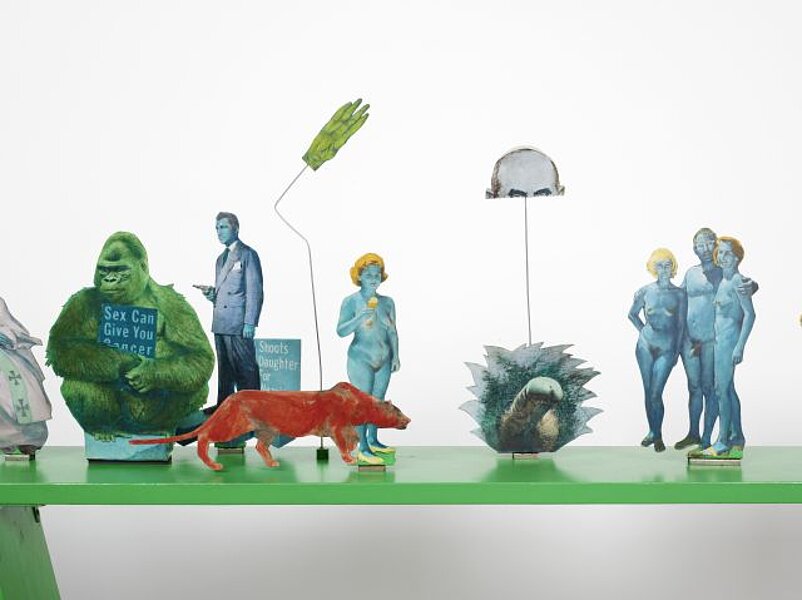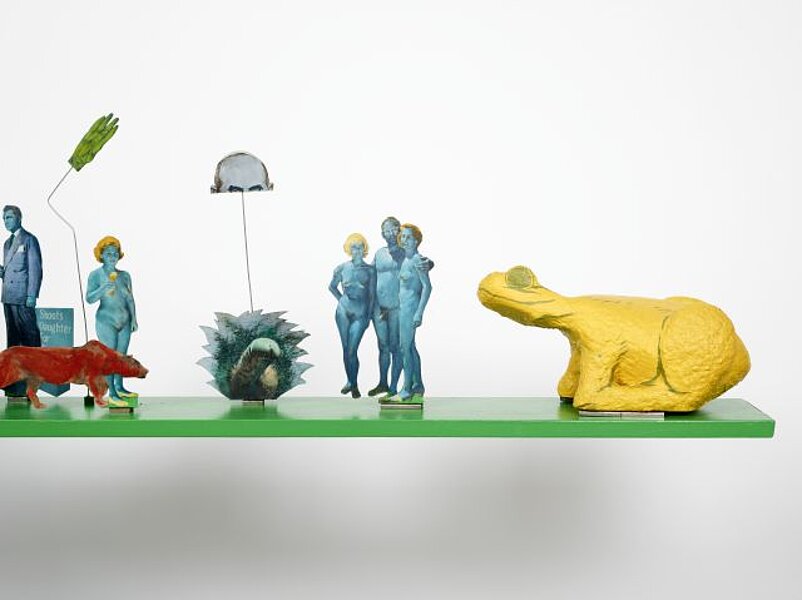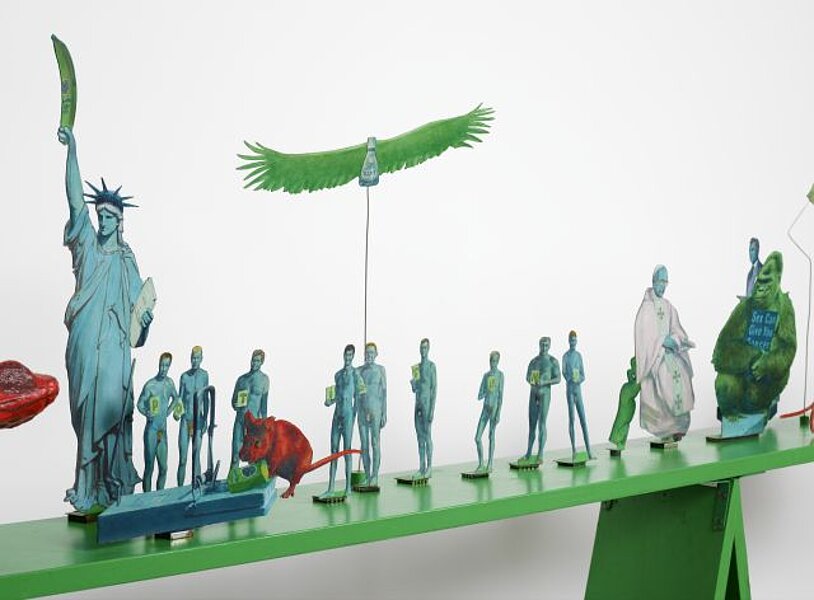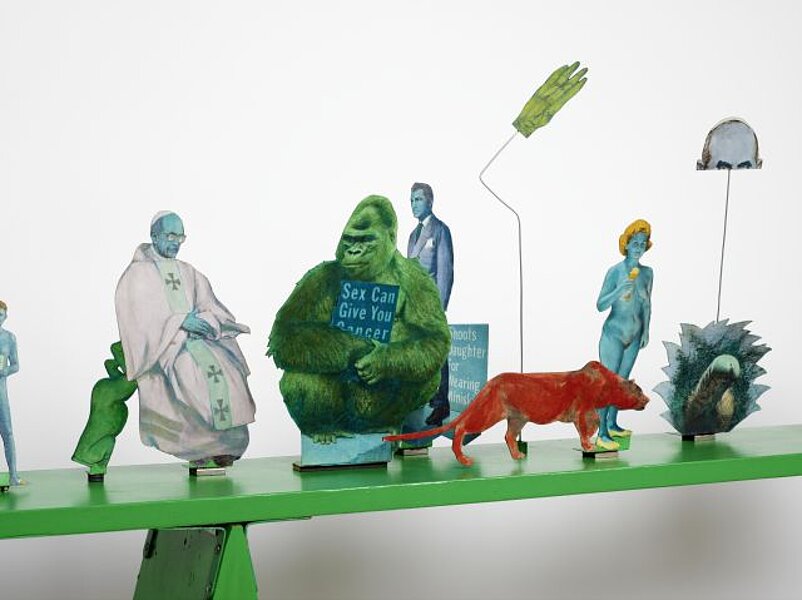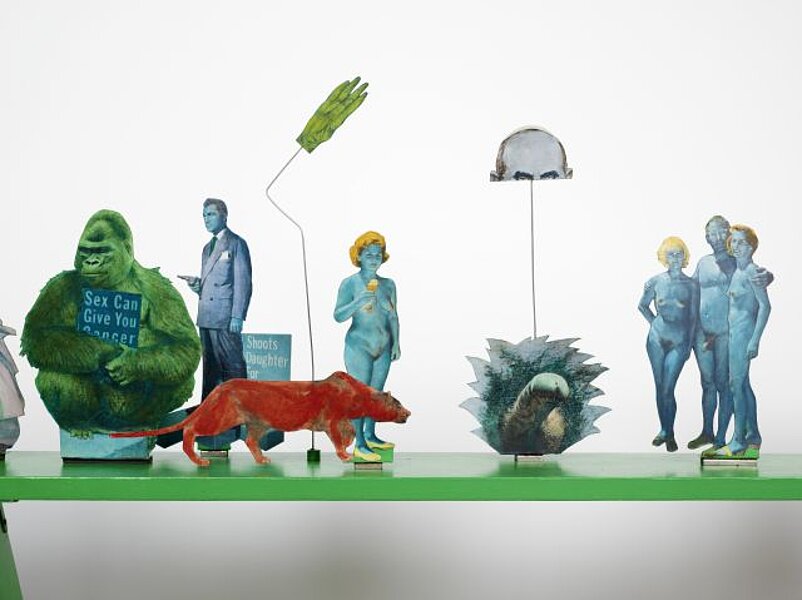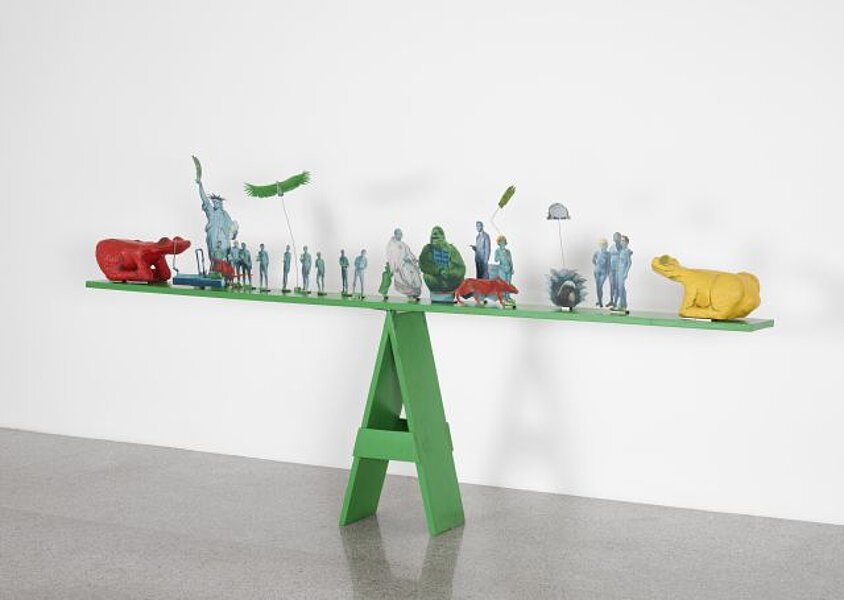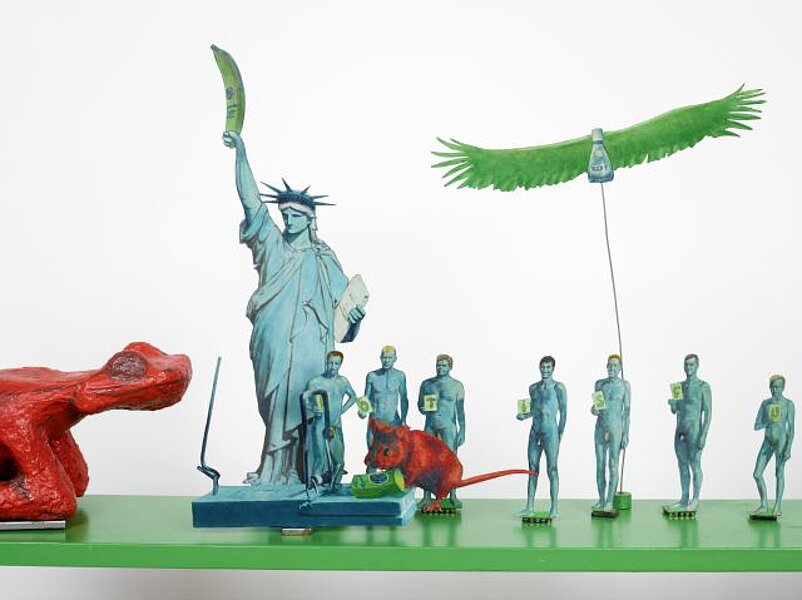
Fahlström, Öyvind
Green Seesaw
1968 - 1969
| Object description | Wood, laquer and metal plating, paper mache and colored photographs |
|---|---|
| Material |
Figures:
metal
Figuruines:
papier mâché
color photographs:
photographic paper
|
| Technique |
Object:
compiling
|
| Dimensions |
Objektmaß:
height: 73 cm,
width: 235 cm,
depth: 19 cm
|
| Year of acquisition | 1978 |
| Inventory number | P 126/0 |
| Creditline | mumok - Museum moderner Kunst Stiftung Ludwig Wien, ehemals Sammlung Hahn, Köln |
| Rights reference | Bildrecht, Wien |
| Further information about the person | Fahlström, Öyvind [GND] |
| Literature |
museum moderner kunst.SAMMLUNG HAHN Norden - Zeitgenössische Kunst aus Nordeuropa |
Öyvind Fahlström is seen today as a pioneer of interactive and multimedia art. Unlike many other Pop artists, he pursued a declared aim to raise awareness of political and economic systems of power. To achieve this, he used comic strips, and later, from the late 1960s, also cheap advertising material and photos from the popular press as sources for his work. In “Green Sea Saw” of 1968/69 the silhouettes of various figures are standing on a stylized seesaw that is held balanced by two frogs. The principle of variability is a key element in this and many other of Fahlström’s installations. The different elements are attached to magnets and can be moved like the pieces in a game across the metal background. As in a children’s game, theoretically it is possible to intervene into the structure of this work and to actively shape this model of the world. The possibility to experiment with change becomes particularly relevant when, as here, the contents of the picture recall real political events. Pope Paul VI., shown here with an erect penis, prohibited the contraceptive pill in 1968, the year that this seesaw was made and also of the climax of the student revolts and the hippie movement. The two frogs holding the balance remind us of the Cold War and the two superpowers with all their armaments, standing facing each other in stalemate. In between them there are naked people and absurd figures, like the gorilla with the sign saying “Sex can give you cancer.” Fahlström‘s variable installation invites us to see the absurdity of reality and to manipulate the world as if it were a model.
© mumok – museum moderner kunst stiftung ludwig wien
